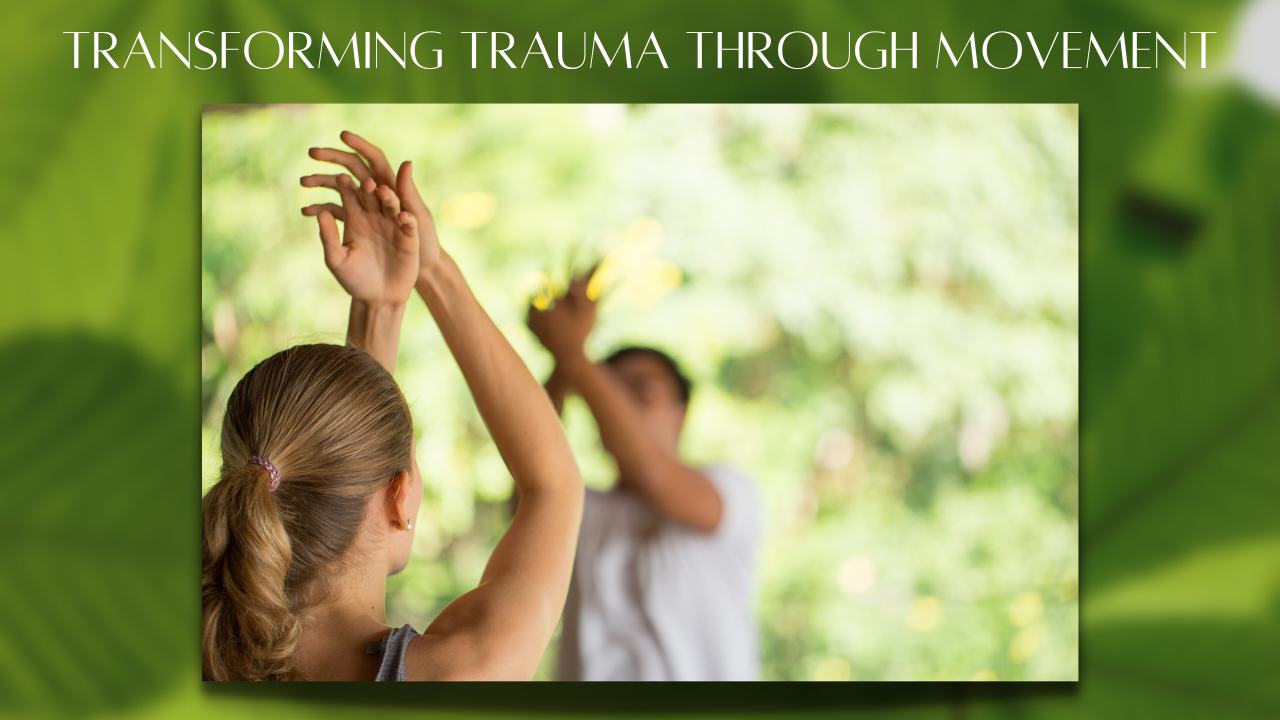Transforming Trauma through Movement

Feeling through the pain of our circumstances is the most healing and courageous thing we can do for our bodies and minds after living through trauma, whether it was a minor or major traumatic experience.
Most of us wish we could skip through the phases of feeling the painful emotions involved in the healing journey. We may take the initiative to identify where the pain derived from, acknowledge why we are the way that we are, and then we want to jump miles ahead toward an envisioned end point of healing. However, our bodies and minds will not allow us to do so. Self-awareness does not indicate healing, and often keeps us trapped in our past pain when we do not take the necessary steps to process the emotions behind the event.
It takes courage to allow ourselves to feel the pain of our traumatic experiences. Our brain has a tendency to try to protect us, telling our minds that it is too much to confront, so we push the feelings down even further down, burying the emotions deep into the unconscious areas of the mind. We hide the experiences in our bodies and store the information in our cells. Research shows that the suppressed emotions we do not feel through will show up later as dis-ease, manifesting as physical illness. This is a beautiful phenomenon, displaying that as humans we are not meant to carry on as stoic beings without feelings, but we are wired to feel through and release trapped pain and even positive emotions in order to become and walk in wholeness. Emotions take on energy in the body and will tug at us until they get our attention in order to be dealt with.
Though most of us wish we could, we cannot think through or rationalize our way into resolving trauma. We cannot deny that as humans we are emotional creatures. The somatic nervous system, which is the nervous system that we are often disconnected from, will store trauma as information waiting to be processed. The trauma we experience in the physical world urges the amygdala to set off an alarm system. The amygdala is a highly sensitive region of the brain, and it does not have a concept of time. This means that the painful experiences you dealt with in childhood are with you today, as the amygdala has no way of telling that 'little kid you' has not grown into 'adult you.'
Several physical changes to the brain occur from the affects of trauma, including hyperactivitation of the amygdala, changes in the hippocampal function and volume, hypoactivation of the medial prefrontal cortex and other regions which contribute to decreased resiliency to potential future trauma, hypersensitivity to stress, inability to make decisions, decreased empathy, and inability to feel grounded in the body. Hormonal changes occur as well due to chronically increased stress hormone production and disrupted sleep patterns, which further disrupt various hormone production. This may show up as increases aggression, inhibition, difficulty maintaining a regular circadian rhythm cycle, dissociation, and memory issues. Inflammatory cytokines are released, contributing to increased chronic low-grade inflammation which is breeding grounds for the development of dis-ease. Genetic changes may occur as well, causing more inflammation and decreased longevity.
Though physical changes occur from trauma, looking further into tools that allow the body to heal and restore balance while uncovering the emotions beneath the surface is a process worth stepping into. When trauma is experienced, physiological (and metaphorical) fragmentation of the self occurs.The right and left sides of the brain become disconnected, while they are really meant to work together in a balanced fashion. This is where specific healing tools can be very useful in allowing the self to process trauma effectively. Through intentional movement, breathwork, specific forms of meditation, and other mind-body tools, the body and mind can begin to restore to a state of balance. One major tool that works to heal the brain in order to process emotions is intentional movement. Mind-Body Medicine promotes the use of various forms of movement that engage the breath, the body, and the mind. Tai-Chi is a very effective form of movement for restoring balance to the body, as it uses very slow and controlled, meditative movements. Both hemispheres of the brain slowly become balanced when we consistently practice the movements involved in Tai-Chi.
Resources:
Gordon, JS., Staples, JK., Blyta, A., Bytyqi, M., Wilson, A. Treatment of Posttraumatic Stress Disorder in Post-War Kosovar Adolescents Using Mind-Body Skills Groups: A Randomized Controlled Trial. J Clin Psychiatry. 2008; 69:1469-1476.
Gordon JS, Staples JK, Blyta A, Bytiqi M. Treatment of posttraumatic stress disorder in postwar Kosovo high school students using mind-body skills groups: a pilot study. J Traumtica Stress, J Traumatic Stress, April 2004.
Heim C, Newport DJ, Heit S, Graham YP, Wilcox M, Bonsall R et al. Pituitary-adrenal and autonomic responses to stress in women after sexual and physical abuse in childhood. JAMA 2000; 284(5):592-597.
Brenner JD, Narayan M. The effects of stress on memory and the hippocampus throughout the life cycle: implications for childhood development and aging. Development Psychopathology. 1996, 10(4):871-885.
Patel R. Spreng RN, Shin LM. Girard TA. Neurocircuitry models of posttraumatic stress disorder and beyond. A meta-analysis of functional neuorimaging studies. Neuroscience & Behavioral Reviews. 2012 Oct, 36(9):2130-42
